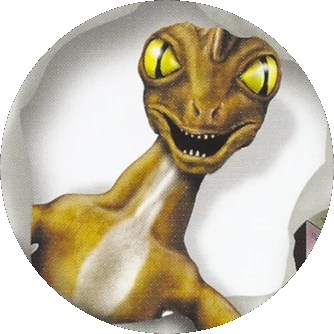Trilobites swarmed through ancient seas 500 million years ago. These arthropods (a group that includes modern crabs and lobsters) were the first animals known to have eyes; this enabled them to see their surroundings and hunt the way modern sea creatures do now. Trilobites survived in the oceans for 300 million years, making them one of the longest surviving species in history.
Bottom-Feeder: The trilobite’s body was divided into as many as 44 segments. Under each segment was a pair of legs. These jointed limbs helped the creature scurry quickly along the seabed where it found its food.
Call Him Gill: Also attached to the legs were threadlike filaments that acted as gills. They were not very efficient, so the trilobite needed a great number of these “gills” to absorb the oxygen it needed from the water.
Crystal Clear[]

Many trilobite fossils have been found almost completely intact.
Trilobites are believed to be the first creatures to develop eyes. Their complex eyes were made of crystals of a mineral called calcite. Clear calcite lets plenty of light through, so the trilobite had good vision to look for prey. Many rows of these crystals lined up to form anywhere from 100 to 15,000 lenses in each eye. Some trilobites had eyes on the top of tall stalks so they could stay buried in the sand and watch for prey or [sic]
The Spice of Life: Trilobites came in all shapes and sizes, ranging from 1 millimeter to 2.5 feet in length. Scientists know of more than 15,000 species of trilobite, and the list is still growing.
Change is Good: Jawed fishes, including early sharks, appeared in the seas about 400 million years ago. Masters of adaptation, some species of trilobite developed sharp spines on their backs to combat these new predators.
Timeline[]
Trilobites lived 550 to 250 million years ago, throughout most of the Paleozoic Era.
Trading Card[]
Trivia[]
- The knowledge card says Trilobites. The trading card says Trilobite.
- On the back of the card, the main paragraph contains a typo; it ends in "and watch for prey or". It can be assumed that the last word was supposed to be predators, or something similar.
- The trilobite is featured on several Monster Mania cards:
- It is first featured in Timeline Tracker on Monster Mania 8.
- It is then featured in the "match up" section of Super Trivia of Monster Mania 16.
- The trilobite at the back card is based on various stalk-eyed trilobites such as Asaphus and Cybele.
